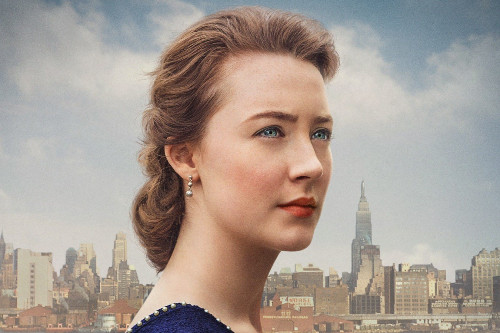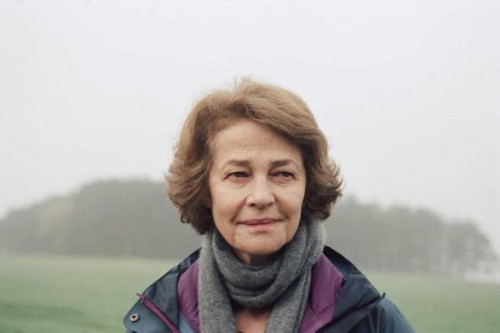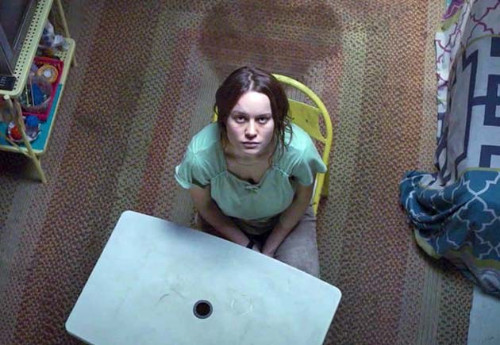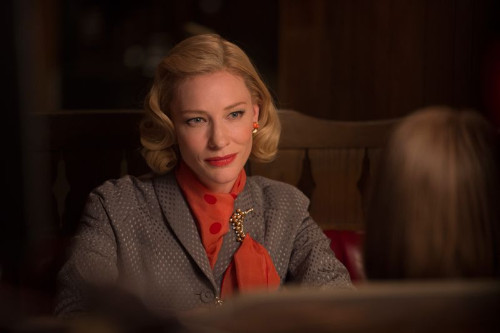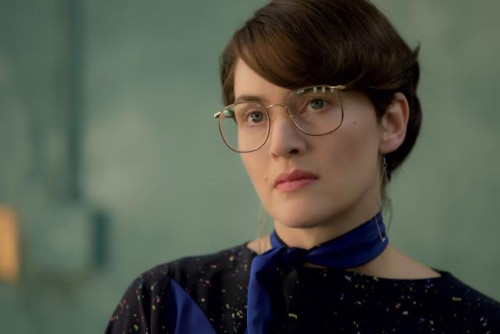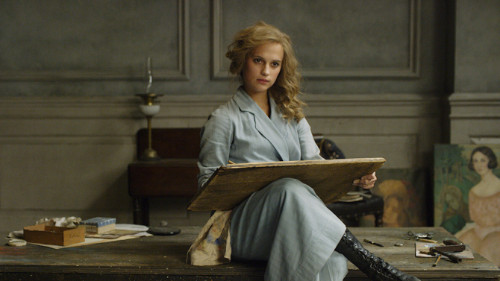Stellar Female Performances 2015
Focus on Outstanding Actresses
By: Nancy S Kempf - Jan 20, 2016
Much discussion has transpired this year about women vis a vis Hollywood: about percentages of women directors, producers, etc. and about salary equity. It is a discussion fueled in part by information revealed in the Sony hack and by Jennifer Lawrence’s outspokenness. Yet for all the talk, we found ourselves in the midst of remarkably talented actresses who gave us a cornucopia of praiseworthy performances in 2015, though women of color were notably absent from the screen. (I very much regret that, living where I do, I did not have the opportunity to see Spike Lee’s “Chi-Ra,” Lee’s contemporary interpretation of Aristophanes’ “Lysistrata,” a play of which I’ve always been enamored.)
Four especially penetrating films focused on women that articulate a wide-ranging cultural critique. Taken together their impact should be nothing less than profound. “Room,” “Brooklyn,” “Carol” and “45 Years” have rightfully received their nomination due in the awards in advance of the Oscars. Their impact has been amplified with greater complexity by the indie jewel “Tangerine,” giving us more reason for rejoicing.
The first decent movie of 2015 was Kenneth Branagh’s “Cinderella.” Lily James is the perfect embodiment of Ella, Cate Blanchett gives the Wicked Stepmother psychological depth, and when you say, “Fairy Godmother,” it’s a given Helena Bonham Carter be cast. Kate Winslet was wonderful as the unconventional landscape architect Sabine de Barra, who risked her career by rejecting the symmetrical design conventions of her era to create an unruly Romantic garden complete with grottos in Alan Rickman’s Louis XIV-period drama “A Little Chaos.” (Rickman himself, in a wonderful turn, played Louis XIV. He will be sorely missed.)
Winslet was also a knockout as Steve Jobs’s Apple marketing executive and confidant, Joanna Hoffman, in Danny Boyles’s film, for which she is receiving much-deserved recognition. Marielle Heller’s “Diary of a Teenage Girl” featured not only an outstanding starring performance, which has also garnered award endorsements, from Bel Powley, but also a compelling supporting performance by the talented Kristen Wiig as her immature but sympathetic mother.
A clever satire on celebrity, Olivier Assayas’s “Clouds of Sils Maria” treads the boards of the self-reflexive trope of actors playing actors, specifically the older actress supplanted by the hungry, would-be starlet, but Assayas uses our expectations to subvert an “All About Eve” fatalistic inevitability. The film features nuanced performances from Juliette Binoche, Kristen Stewart and Chloe Grace Moret as strong-willed, independent women. Binoche challenged Assayas to write a film about women that left the rounding out of the characters to the actresses. Binoche’s Maria is an international actress accompanied by her multi-phone wielding personal assistant, Val (Stewart). Maria’s mentor, the playwright who cast her in the role of a — perhaps manipulative — young woman in a relationship with an older woman, has died on the eve of the play’s revival. Moret as Jo-Ann Ellis is a paparazzi-baiting bad girl who has been cast in the role that made the young Maria a star. Maria’s commitment to her craft is juxtaposed with Jo-Ann’s pop culture celebrity in a film that is not ashamed to grapple with large questions of aesthetic and ethical concerns about artistic authenticity.
Jennifer Lawrence is front and center in her third collaboration with David O. Russell and his troupe as the determined inventor of “Joy.” Paul Weitz brought the marvelous Lily Tomlin back to the big screen in “Grandma” rounding out a smart ensemble with Julia Garner as her granddaughter and Marcia Gay Harden as her daughter -- and with grace and humor they tackled the subject of abortion.
Winningly co-starring with their leading men, accomplished actresses had an opportunity to shine in little romantic vehicles: Dan Fogelman’s “Danny Collins” with Annette Bening and Al Pacino; Brett Haley’s “I’ll See You in My Dreams” with Blythe Danner and Sam Elliott; and Isabel Coixet’s “Learning to Drive” with Patricia Clarkson and Ben Kingsley. All three highlighted leading women on their own terms against their leading men.
If those pairings sparkled with chemistry, Marion Cotillard and Michael Fassbender veritably seethed with it in the Scottish play, directed by Justin Kurzel, and I found Alicia Vikander’s performance in Tom Hooper’s “The Danish Girl” more charismatic than the gender-bending Eddie Redmayne’s.
Alicia Vikander also stars as Vera Brittain, a young woman who defied convention, first by attending Somerville College, Oxford, and then by leaving to become a nurse on the front lines in the Voluntary Aid Detachment in James Kent’s “Testament of Youth,” adapted from Brittain’s First World War memoir for the screen by Juliette Towhidi. Abi Morgan’s “Suffragette” with Carey Mulligan, Helen Bonham Carter and Anne-Marie Duff and Peter Sollett’s “Freeheld” with Julianne Moore and Ellen Page took on women’s issues, historical and contemporary respectively.
We also saw women in roles more typically inhabited by men. Taylor Sheridan’s script for Denis Villeneuve’s Mexican border drama “Sicario” cast Emily Blunt as a principled FBI agent caught in the murky amoral underworld of Mexican drug cartels. Peter Straughan’s script for David Gordon Green’s “Our Brand Is Crisis” was based on Rachel Boynton’s 2005 documentary of the same name about the campaign marketing tactics employed by James Carville and his Washington-based political consulting firm GCS for Gonzalo Sanchez de Lozada in the 2002 Bolivian presidential election. Sandra Bullock lobbied for the role of the central character, based on Carville and originally intended for a man.
In the realm of comedy stars, Melissa McCarthy has been developing her own version of franchise since 2013, this year’s installment being Paul Feig’s “Spy,” and with “Trainwreck,” Amy Schumer joined Judd Apatow’s repertoire of responsibility-phobic characters that went co-ed in 2011 with “Bridesmaids.” (N.B. Jason Moore’s abysmal “Sisters,” with Tina Fey and Amy Poehler, should never have been made.)
In addition to the supporting roles already mentioned, superb performances abounded in which a woman forms a kind of fulcrum between two male characters. Elizabeth Banks grounds Bill Pohlad’s “Love & Mercy” as Melinda Ledbetter, the savior who comes to the rescue of John Cusack’s older Brian Wilson (to Paul Dano’s younger) from the grips of his abusive therapist, Dr. Eugene Landy (Paul Giamatti). In a poignantly understated performance as the great detective’s housekeeper in Bill Condon’s “Mr. Holmes,” Laura Linney exudes an inarticulate love for the young son she lives to protect and endurance toward the irascible old man in her charge, marvelously channeled through Ian McKellen.
In the triad of excellent performances for Joel Edgerton’s “The Gift,” Rebecca Hall plays Robyn Callum, a woman pulled between the manipulations of her husband on the one hand (Jason Bateman) and the forgotten acquaintance (Edgerton) who shows up out of nowhere to haunt him. Laura Dern is the distraught mother of an unemployed, young single father, played by Andrew Garfield. Her salt of the earth son gets sucked into the home foreclosure racket by a ruthless real estate broker, played by Michael Shannon, in Ramin Bahrani’s chilling “99 Homes.”
The coming of age catalyst for the central character in Alfonso Gomez-Rejon’s “Me (Thomas Mann), Earl (RJ Cyler) and the Dying Girl,” is Rachel. Olivia Cooke navigates a beautiful re-invention of the dying girl trope sans sentiment and treacle. In “Youth,” Paolo Sorrentino gives Rachel Weisz’s supporting role as Lena Ballinger almost equal weight with the film’s co-stars: Michael Caine as conductor/composer Fred Ballinger -- her father -- and Harvey Keitel as film director Mick Boyle -- her father-in-law. Lena’s point of view enriches this meditation on age by considering the friends through the lens of the mature child and by presenting her understanding of Fred, not as an artist, but as a father and a husband to her mother.
Even before 2011, when his personal and creative collaboration with actress/writer Greta Gerwig began, Noah Baumbach explored multi-dimensional women in films like “The Squid and the Whale” (2005) with Laura Linney and “Margot at the Wedding” (2007) with Nicole Kidman and his then wife, Jennifer Jason Leigh. This year brought two Baumbach films, “While We’re Young,” for which he has the sole writing credit, and “Mistress America,” which was co-written with Gerwig. Like Apatow’s and Feig’s shallow creations, Baumbach’s characters have failed to grow up, but they differ by possessing a depth and complexity that the Apatow/Feig woman- man-child lacks, and as Baumbach’s films reach their denouements, we usually have a sense that the Baumbach/Gerwig character is going to come to terms with the necessity for maturity.
Speaking of Jennifer Jason Leigh, I do not want to overlook a performance that could have been ridiculously over the top but is not in Quentin Tarantino’s admittedly gory homage to the American western, “The Hateful Eight.” The range Leigh manages to achieve, through subtle facial expression alone, is beyond various: the contempt and scorn of a psychopath, the wounded hurt of a child or injured animal, the manipulations of a coquette, the defiance of an outlaw. Leigh seems to effortlessly traverse the gamut.
Of the plethora of astounding performances by women this year, four especially stand out, each a marvel of quiet subtly that dazzles. “Room,” “Brooklyn,” “Carol” and “45 Years” -- all four, each in its own way, share a quality of extraordinary eloquence through what isn’t said.
ROOM
I had seen Larson in small parts like Greenberg’s niece in Baumbach’s 2010 “Greenberg” with Ben Stiller and then in Oren Moverman’s 2011 “Rampart” with Woody Harrelson and Joseph Gordon-Levitt’s 2013 “Don Jon,” at which point she’d done over a dozen more roles in feature films. Yet when I encountered the force of nature that she is, in Destin Daniel Cretton’s 2013 “Short Term 12,” it was as if for the first time. I started to write that in “Short Term 12,” Larson plays Grace..., but that would be wrong: Larson is Grace. She is both Grace the character, a supervisor at a short-term group home for troubled teens, and she is the embodiment of grace. Introverted by nature, she works with her boyfriend, Mason (John Gallagher, Jr.), who tries to draw her out, but for reasons that remain mysterious, whatever it is she feels she must guard fills a deep well of empathy she quietly yet ferociously shares with her charges barely younger than herself. In a delicate dance of ensemble reciprocity, Cretton’s cast touchingly captures the pain that is borne of abuse and the meaning of unconditional love.
To our wonderment, Larson dips into that seemingly bottomless emotional well again in Lenny Abrahamson’s “Room,” which Emma Donoghue adapted for the screen from her novel. Larson is Joy. Kidnapped at 17, she has been held captive in a dingy soundproofed room for seven years. Her salvation has been her son, Jack, and the action opens on the eve of his fifth birthday. Somehow, she has managed to raise Jack as a happy, well-adjusted child, allowing herself a pure joy in his being that he returns in the circumscribed life they share. Just as Jack is becoming old enough to start asking questions, Joy’s captor loses his job. The vitamins are not restocked; the heat bill goes unpaid. Joy understands the degree of their desperation, but an attempt to escape is fraught with danger, too. Larson’s visage can convey a deeply complex range of emotional subtlety, and we learn more about her and her relationship with Jack through what we see than through what she says, not simply about herself and Jack, but about the endurance of the human spirit.
Joan Allen deserves praise, too, for a poignantly perfect supporting role as Joy’s mother, a performance that has been wholly overlooked except by the Indiana Film Journalists Association. Allen almost silently conveys the tangle of a mother’s emotions in parallel with her daughter’s: the anguish, not only over the horror of her daughter’s captive experience, but of a mother’s pain in the knowledge that she will never fully fathom that experience. This understanding, in relation to her unabashed exultation in her daughter’s strength, perseverance and ability to have somehow spared Jack the clinically predictable consequences of having been raised in such unimaginable circumstances, infuses the film with a humanity almost impossible to describe.
BROOKLYN
Saoirse Ronan is the immigrant Eilis Lacey at the center of John Crowley’s bildungsroman, “Brooklyn.” Nick Hornby adapted the screenplay from Colm Toibin’s novel, and everything from the superb ensemble cast to Michael Brooks’s score to Yves Belanger’s cinematography to Jake Roberts’s editing is a quiet revelation. Just as during and after the potato famine of the 1840s, the United States generally and New York City especially, with its large Irish population, provided a beacon of hope for Irish young people fleeing a foundering rural economy in Ireland. As a non-participant in World War II, Ireland received no help from the Marshall Plan that aided war-torn Western European countries. So in 1952, Eilis joins this wave of young people. A New York City parish priest (Jim Broadbent) has sponsored her passage, she secures lodging in a boarding house for young women, and she finds work in an upscale department store. She is a complex mix: overcome with loneliness but braving the unknown, filled with a sense of familial obligation but determined to forge her independence.
Like Larson’s Joy, Ronan’s Eilis conveys her fluctuating feelings in her countenance. Writing for The Guardian (8 Nov. 2015), Mark Kermode says that Ronan, “the miraculous still centre of this beautiful, old-fashioned” movie, “appears to have developed the ability to act with her pupils, which seem to widen and contract at will.” Early in the film, and before Eilis meets her Italian beau (Emory Cohen), her fellow roomers take her for a dupe for agreeing to help with the parish’s annual Christmas dinner for the needy -- men, the priest explains, who built the city’s tunnels and bridges. It is a beautiful scene -- who cast this movingly realistic roomful over which the camera lovingly pans? -- in which one of the men, played by Iarla O Lionaird, stands and sings the achingly beautiful Irish love song “Casadh an tSugain” acapella.
When Eilis arrives back at her boarding house, her landlady, Mrs. Kehoe (Julie Walters), invites her in for a nip of sherry. Little is said; Mrs. Kehoe makes small talk, Eilis demurs. Yet in the course of this scene following her Christmas experience in the parish hall, Ronan’s face registers a deepening understanding of her privilege and good fortune, of the opportunity others have made possible for her, of her responsibility to make good on their generosity as well as her responsibility to honor the truth of her own self. What Ronan wordlessly conveys in these fleeting moments propels the balance of Eilis’s coming of age in America.
CAROL
Phyllis Nagy adapted Patricia Highsmith’s 1952 novel “The Price of Salt” for Todd Haynes’s “Carol.” Cate Blanchett is the titular character whom we meet just at the point in her unhappy marriage when she is trying to break free. All that holds her is a deep maternal bond with the young daughter she adores. Out Christmas shopping, she encounters a department store clerk -- who, we will come to learn, is an aspiring photographer -- Rooney Mara, in an equally stellar performance. They fall in love, but it is 1952. All that can’t be said in “Carol” is paralleled with a visual leitmotif: expanses of glass -- shop and house and car windows, automotive windshields. What we see behind the glass is often obscured by rain or snow or the trickling humidity of fog. Glass is a barrier but a transparent one, and, like taboos, can be broken.
45 YEARS
Love stories are often cute or saccharine or otherwise superficial, none of which interests Andrew Haigh. His 2011 “Weekend” deals with the complexity of love, its messiness, its often bewildering lack of logic, its clumsiness and its intimacy. It is also a film about identity, the separate identity each lover confronts within the other and the thing between them, which becomes a third entity. “Weekend” is about the 48 hours two young men share; “45 Years” is about a life-long marriage confronted with an unexpected intruder who shatters that third entity. Written by Haigh from a short story by David Constantine called “In Another Country,” “45 Days” begins a week before the 45th wedding anniversary Geoff and Kate Mercer are preparing to celebrate.
Then, on the erroneous assumption Geoff is next of kin, a letter arrives explaining that the ice-preserved body of Katya, his first love, has been recovered from a mountain crevasse she fell into as she and Geoff were hiking in the Swiss Alps 50 years earlier. Katya’s sudden presence is the wedge that opens a parallel fissure in Kate and Geoff’s marriage, and Haigh again confronts us with the complexity of love and the possibility that there is no such thing as a happy ending, at least in the conventional way we understand that phrase. Yet, whereas “Weekend” teems with the rich quickening and buoyancy of new love, “45 Years” exposes a long-ignored emotional vacuity through a specter frozen in time that catches each spouse off guard.
The couple is played by veteran actors Tom Courtenay and Charlotte Rampling in an anti-grand pas de deux communicated almost exclusively through gesture and expression. In his review for the New York Times (Dec. 22, 2015), A. O. Scott observes that “Mr. Courtenay, a naturally demonstrative actor, registers a convincing blend of longing, confusion and shame. Ms. Rampling, a stiller, deeper-running pool, conveys emotions so strange and intense that they don’t quite have names.”
That this many actresses achieved such heart-stopping performances this year — especially the intoxicating renderings from Brie Larson and Joan Allen, Saoirse Ronan, Cate Blanchett and Rooney Mara, and Charlotte Rampling -- is a veritable embarrassment of riches. They have elevated our story through characters that speak to women’s resilience and self-sufficiency through their endurance under circumstances of exploitation to the point of enslavement (“Room”), their dignity and independence (“Brooklyn”), their inherent nurturance and bravery in the face of the status quo (“Carol”) and their emotional vulnerability despite strength of character (“45 Years”). As interesting as the men were this year, the women on screen shone a brighter light on the better angels of our nature.

